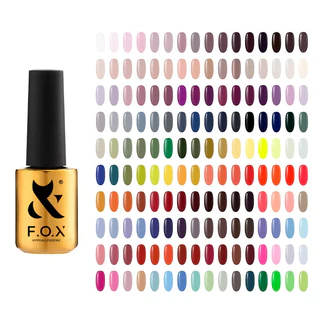In the wake of the current rap beef between Kendrick Lamar and Drake, we spoke with Tariq Nasheed. The illustrious figure most notable for creating the infamous movie series Hidden Colors, 1804: The Hidden History of Haiti and his upcoming film, Microphone Check, which releases on May 23rd.
Nasheed, a film producer and Hip-Hop historian formerly K-Flex from the rap group Mink Slide, is a multi-hyphenated internet personality most renowned for his radio show Tariq Radio, where he shares social commentary on Foundationally Black topics and controversial debates. Additionally, he has authored several books, including Foundational Black American Race Baiter and The Art of Mackin’. The RMR team got to sit down with him and discuss his upcoming film Microphone Check, highlighting the pioneers of rap culture and the origins of Hip-Hop. This is followed by his take on the evolution of rap beef and its impact on the current rapper feuds between Kendrick Lamar vs Drake.
Microphone Check
Microphone Check addresses the lack of a definitive origin in hip-hop history and aims to bridge the gap between the start of rap culture in the early 1970s to today, according to Nasheed. “Because there has not been a definitive narrative, every other year the narrative will change,” he said. “And also they keep throwing these other different influences into the origin of Hip-Hop,” alluding to the rumors of Hip-Hop originating from Jamaican toasting or Latino culture. “That happens when we don’t have a definitive story,” he said with intentions of setting the record straight about the foundation of Hip-Hop culture. “With Microphone Check, we want this to be the end all be all for the origin of Hip-Hop”
The two-hour film highlights the foundation of Hip-Hop from the heart of Bronx, NY. Featuring pioneers like MC Sha-Rock, MC Coke La Rock, MC Busy Bee, and graffiti artist Cornbread, each highlighting the story of how Hip-Hop came to be. He hopes to create other projects surrounding the origin of Hip-Hop across America, with the possibility of creating a West Coast version as well.
Rap Beef
This evolution of rap stems back to the first rap battle on record on December 30th, 1981 at the defunct Harlem World at the corner of 116th St and Lenox Ave. Each emcee wanted to test who could hype the crowd up the best. Busy Bee, already well known in the party scene for his exceptional party emcee skills, set the atmosphere of the function. Spontaneously, Kool Moe Dee, who was part of The Treacherous Three battle MC trio, hopped on the mic after and revolutionized the style and flow of diss rap.
“That was one of the first rap battles where the opponent (Kool Moe Dee) made a lot of personal jabs about the other opponent (Busy Bee),” said Nasheed, highlighting the origins of rap beef and how it marked the turning point of rap history and their careers. “That launched Kool Moe Dee’s career commercially,” he said. “So, that template was born where people said ‘If I go after the big dogs, I can get my name out there.’”
Fast forward to the present day, rapper feuds have changed quite tremendously, but the essence of rap beef remains immortalized through records.
Kendrick Lamar vs Drake
While it’s not 100% certain how the feud between Kendrick Lamar and Drake began, this rap beef has been studied by many not only for their groundbreaking lyrics but for its exposure to dark secrets in the industry and its impact on rap culture. “People are studying this battle because the way Kendrick did it was very strategic; by putting out multiple rap disses back to back so that Drake’s disses wouldn’t get any steam or momentum,” said Nasheed. “Then he put out a whole club banger that had a whole coast dissing Drake.”
After the groundbreaking track “Like That” with Metro Boomin, Kendrick Lamar, and Future released back in March, tensions grew higher as fans and the media anticipated who would throw the next blow. Additionally, other tracks including Drake’s “Family Matters,” “Push Ups,” and Lamar’s hit tracks “Euphoria,” “Meet The Grahams,” and “Not Like Us,” followed after. Each track sets the precedent in a long-standing personal beef.
Rap Culture’s Crash-out Period/Corporate Interference
With so many different rapper feuds erupting this year like Sukihana vs JT, Chris Brown vs Quavo, and Megan Thee Stallion vs Nicki Minaj, it’s a wonder how and when this crash-out period even began. Who is fueling these conflicts to exist if not the fans?
“I think the crash-out period started in the mid-90s when the corporate media started to throw logs in the fire in the beef,” said Nasheed, pinpointing the transition of rap disses in hip-hop history. “Then it took it somewhere else because the corporate media saw it like ‘We can squeeze some life out of it and sell papers if we instigate certain things.’ Vibe Magazine did so with Tupac and Biggie by pushing the East Coast/West Coast Beef and then we saw how tragic that ended.” Online blogs have covered rap feuds for decades, reflecting the impact the media has on artists, especially for artists trying to garner attention for their work.
“These blogs will help instigate and push beef because it drives traffic to these blogs,” said Nasheed. “A lot of these people who are trying to get put on, they’re like ‘Hey I can get some publicity from these blogs… if I crash-out, all the blogs will be talking about me!’ A lot of this crashing out is being incentivized by a lot of predatory blogs and people trying to get traffic to their content,” he said.
As the feud between Drake and Kendrick Lamar winds down, we expect to have additional conversations dissecting the influence and effects of rap beef and the possibility of other future rapper feuds to come. However, it is important to learn the history of rap culture and where rap beef originated. Want to learn more about the foundation of hip-hop? Check out the film Microphone Check, out now in select theaters near you!








